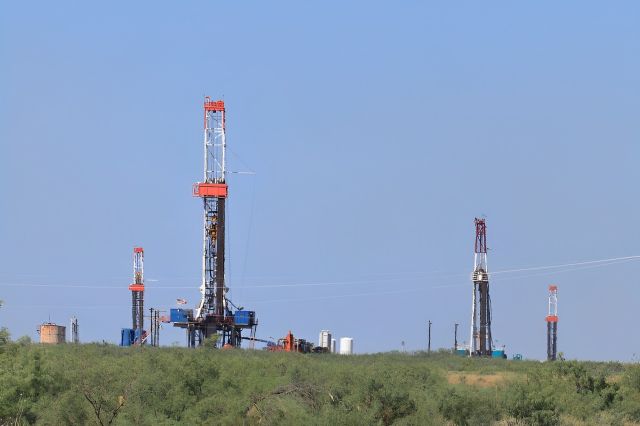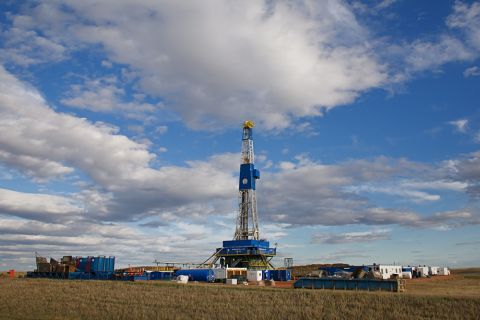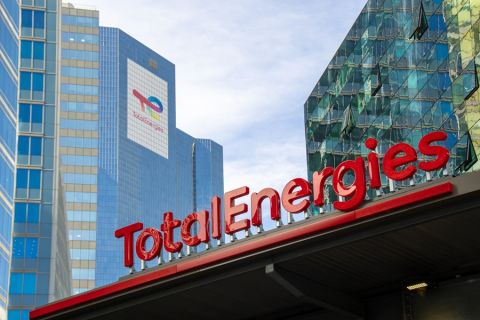
About 25% of Lower 48 dry gas production is associated gas, mainly from the Permian. (Source: Shutterstock)
Associated gas production, including by private E&Ps in the Permian Basin, is expected to slow amid a consolidation wave, an energy analyst says.
The oil-prone basin, where gas production is driven by oil-directed wells, is currently dominating U.S. gas production growth, Rystad Energy Senior Analyst Matthew Bernstein said during Hart Energy’s DUG GAS+ Conference and Expo.
About 25% of Lower 48 dry gas production is associated gas, mainly from the Permian. However, year-on-year changes compared to dry gas production in key plays such as the Appalachian Basin and Haynesville Shale could look much different by 2026.
“From the perspective of a gas E&P located in Appalachia or the Haynesville, you are going to have to endure some short-term pain probably with the gas that’s coming out of the Permian right now driven by oil economics,” Bernstein said. “But in the longer term, we do expect the rate of that growth to slow due to this consolidation.”
The most recent M&A rush has left fewer private E&Ps of scale, according to Rystad. The firm estimates that the top six combined firms now own about 62% of the net remaining oil resources in the Permian, and focus has shifted from the so-called Shale 4.0 era to inventory preservation with moderate production growth.
“There’s some potential for operators in gassier areas of the basin or potential for companies to pick up some of those non-core or non-strategic assets that are set to be divested by the Exxons and the Diamondbacks of the world,” Bernstein said. “But that said, we just really don’t think that the absolute scale of the volumes that are going to be coming from that is the same as in the assets that were operated by these large private E&Ps in the Shale 3.0 era.”
Changes ahead
Besides consolidation, lower initial production rates are also expected to contribute this year to a decline in associated gas produced in the Permian, according to Rystad.
“We certainly don’t take this kind of doomsday view that all the best wells have been drilled and productivity is only going to decline from here on out,” Bernstein said of Permian production. However, gas IP rates are not expected to reach heights seen in 2021. “You do have a down tick from 2021 levels in ‘22 and ‘23. So, when we model out our production forecast for the Permian, we’re not expecting these productivity rates even as the wells get gassier.”
Looking at year-on-year changes, Bernstein said the Permian added more than 2 billion cubic feet of day (Bcf/d) of gas in 2023. About 1 Bcf/d is forecast to be added from the Permian in 2024, compared to expected declines of about 1.5 Bcf/d in the Haynesville and 668 million cubic feet per day (MMcf/d) in Appalachia.
The pattern is expected to continue through 2025.
“As we possibly run into takeaway capacity constraints and as the pace of growth slows due to consolidation, we see that picture shifting with the Permian share of that losing ground by 2026 and really getting a lot of opportunity for the Haynesville there, once prices improve out on the curve and once the new LNG capacity and the new pipelines hopefully become available.”
Rystad forecasts about 2.1 Bcf/d of dry gas production will be added in the Haynesville in 2026, more than double the 1 Bcf/d of growth in the Permian and 869 MMcf/d in Appalachia.
Oil, gas prices
For now, oil prices have been high enough to support drilling in the Permian, pushing up associated gas production in the last year. On April 2, WTI crude futures for May was fetching about $85/ bbl.
Pressure from low prices have prompted natural gas-focused drillers in natural gas dominant plays to slow production.
“We do know that obviously gas is below $2. It’s not a pretty picture in terms of well commerciality if you’re in a dry gas play right now,” Bernstein said before pointing out the revenue by hydrocarbon breakdown for select plays and subplays.
Given that the Permian is an oil economics driven play, companies here “are generating a lot of revenue right now and generating a lot of positive free cash flow when your liquids revenue is this portion of your total revenue,” Bernstein said.
That picture looks much different in Appalachia, with a lower percentage of liquids and the Haynesville, which is predominantly dry gas focused.
Though U.S. dry gas output is set to fall in 2024, Rystad anticipates gas plays to rebound in early 2025. A decline of less than 900 MMcf/d is forecast in 2024, compared to 2023. “But then we do see a rebound starting to be driven especially by the dry gas plays in 2026,” he said.
The Haynesville, he added, is expected to continue to gain market share, eventually making up about 20% of the U.S. dry gas supply mix by 2030.
Recommended Reading
M&A Spotlight Shifts from Permian to Bakken, Marcellus
2024-04-29 - Potential deals-in-waiting include the Bakken’s Grayson Mill Energy, EQT's remaining non-operated Marcellus portfolio and some Shell and BP assets in the Haynesville, Rystad said.
Chevron CEO: Permian, D-J Basin Production Fuels US Output Growth
2024-04-29 - Chevron continued to prioritize Permian Basin investment for new production and is seeing D-J Basin growth after closing its $6.3 billion acquisition of PDC Energy last year, CEO Mike Wirth said.
E&P Highlights: April 29, 2024
2024-04-29 - Here’s a roundup of the latest E&P headlines, including a new contract award and drilling technology.
C-NLOPB Issues Call for Bids in Eastern Newfoundland
2024-04-29 - Winners of the Call for Bids No. NL24-CFB01 will be selected based on the highest total of money the bidder commits to spend on exploration of a parcel during the first six years of a nine-year license.
TotalEnergies Eyes Suriname FID by Year-end 2024
2024-04-29 - France’s TotalEnergies and U.S. partner APA Corp. look to place their long lead orders ahead of a final investment decision related to their joint development offshore Suriname in Block 58.






